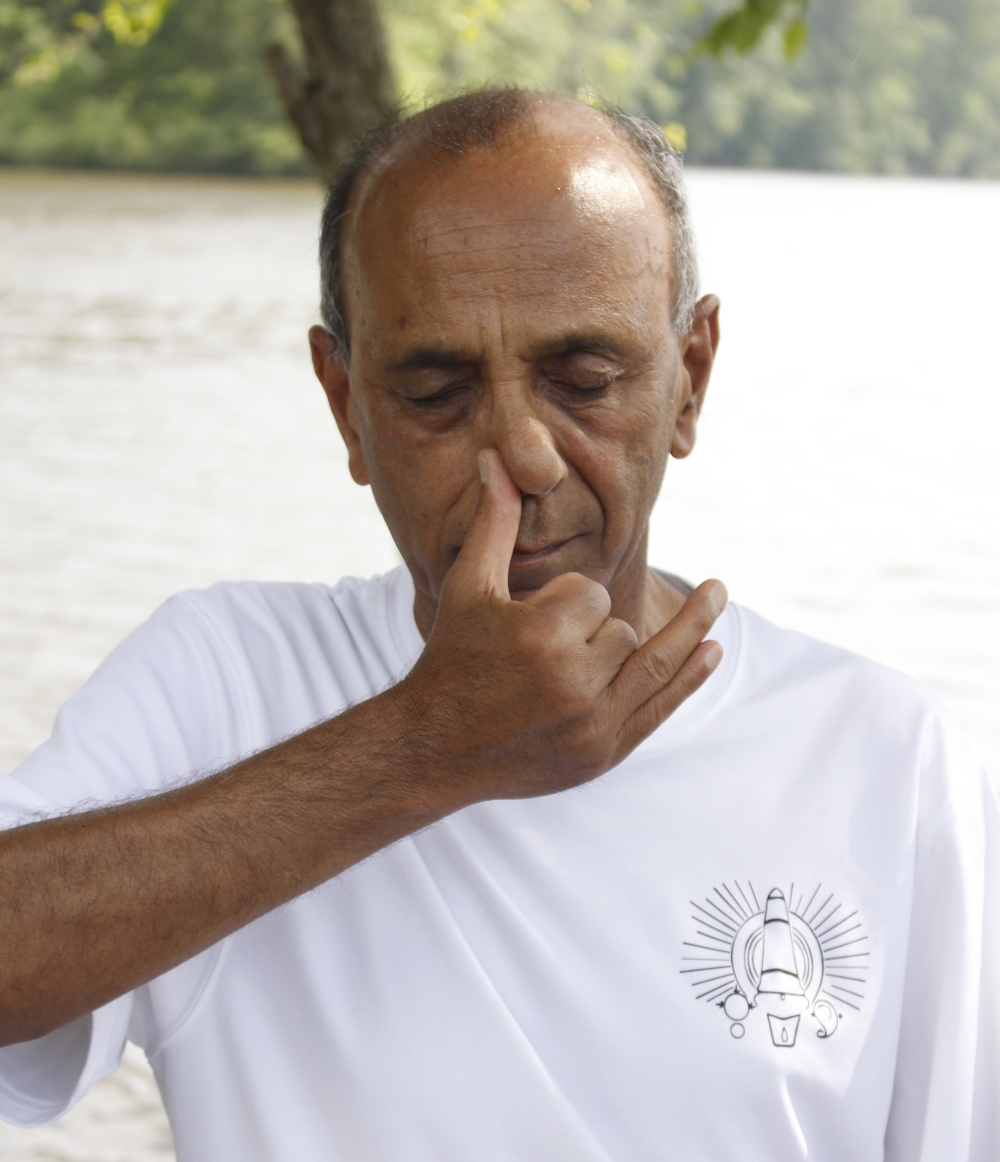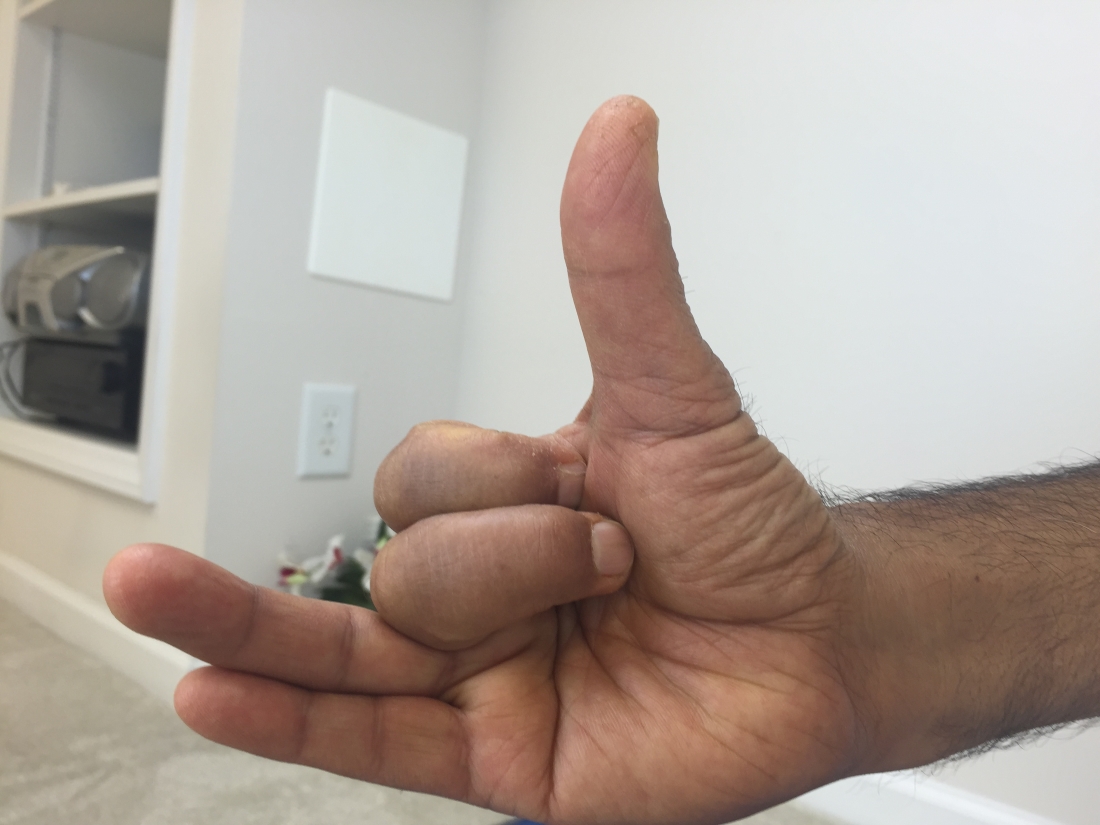
Nadi Shuddhi Pranayama
Also known by the names "Naadi Shodhanam" or "Anuloma-Viloma", Naadi Shuddhi (नाडी शुद्धि) is one of the most commonly practiced pranayama techniques in yoga. The word "naadi" means "nerves". In fact, in yoga the term naadi is applied to psychic channels associated with the flow of prana (vital life force). According to some ancient texts, there are 72,000 such naadis in a human system. The words "shuddhi" or "shodhanam" both mean "cleansing" or "purification". So the term "naadi shuddhi" literally means cleansing of the subtle nervous system. A clean naadi system allows free flow of prana which helps bring more vitality and energy to the system.
In this pranayama technique, we use long, deep, and soft (almost soundless) ujjayi breaths for each inhalation and exhalation. Long breaths imply long duration of each breath. That means, our intention is to prolong the duration of each inhalation and exhalation, without causing any strain in the breathing cycle. Deep breaths imply that we engage the full capacity of the lungs in each breath. While inhaling, begin by bringing air to the lowest part of the lungs by filling the belly out like a balloon, continue the inhalation by expanding the chest and the ribcage sideways, and finally lifting the collar bones up slightly to fill the top part of the lungs. We do the exhalation in the reverse order – begin by lowering the collar bones, then soften the chest and the ribcage and finally try to suck the belly in toward the spine. The only sound that you may hear is the soft sound of the ujjayi breaths.
Step-by-step
I am pleased to present this video with detailed instructions.
Stage 1

Vishnu Mudra
- Sit in any comfortable sitting posture with the spine erect, eyes closed and shoulders relaxed.
- Make the Vishnu Mudra with the right hand – make a soft fist, lift the thumb and the last two fingers up, keeping the middle two fingers at the base of the thumb. During the practice using this mudra, the thumb is used to close the right nostril whereas the ring finger is used to close the left nostril.
- With the left hand, make the Chin Mudra – join the tips of the index finger and the thumb, keeping the rest of the fingers open and relaxed. Keep the hand on the left knee or thigh, palm facing up.
- Use the right thumb to close the right nostril. To get started, exhale through the left.
- Begin the first round by inhaling through the left nostril.
- At the end of inhalation, close the left nostril with the ring finger and open the right. Then exhale through the right nostril.
- Inhale now through the right. At the end of inhalation, close the right nostril with the thumb again and exhale through the left.
- This completes one cycle of breathing. Continue for about 6-7 similar cycles. Make sure to use deep and soft Ujjayi breaths for each inhalation and exhalation.

Chin Mudra
Stage 2
Once you become comfortable with the basic breathing pattern for naadi shuddhi, you can introduce a count into your breathing. To mentally assess the duration of inhalation and exhalation, you can use a mental count of ‘OM 1’, ‘OM 2’ etc, each being approximately one second. The effort in this breathing technique is to make the duration of exhalation longer than that of inhalation. Over a period of time, with practice, you want to achieve a ratio of 1:2 between inhalation and exhalation. So, for example, if your count for inhalation is 5 seconds, then try to extend the exhalation to up to 10 seconds. This may not happen immediately; so try not to force yourself to get to this ratio. Build up to this ratio over a period of time. As your practice deepens, you may be able to extend the duration of each breath, maintaining the same 1:2 ratio. Try to build up your capacity to a count of 10:20 – 10 seconds of inhalation and 20 seconds of exhalation.
I will introduce more advanced stages of naadi shuddhi involving breath retention and ‘bandhas’ in a subsequent post.
Benefits
- As mentioned above, naadi shuddhi helps cleanse the naadi system so prana can flow freely and energize the whole system.
- Deep, slow breathing brings in increased supply of fresh oxygen into the system. More oxygen means more pure, oxygenated blood going to every cell of the body. This also means that more of carbon dioxide and toxins are eliminated from the body.
- Deep breathing helps calm the nerves which can help with the management of anxiety and stress.
- Deep, alternating breathing is also now recommended for managing high blood pressure
- Alternate breathing brings about a balance in the system – balancing the dualities like hot/cold, good/bad, honor/dishonor etc. This also helps balance the two sides of the brain – the analytical and the emotional, thus developing a more balanced personality.
- In the Kundalini system of yoga, balancing the breath between the two nostrils implies balancing the Ida and Pingala naadis. When these two naadis are balanced, then the prana (vital energy) can flow through the central channel of energy called "sushumna naadi" thus clearing the passage for the rising of the Kundalini Shakti.
Contraindications/Cautions
None! If you can breathe, you can practice Naadi Shuddhi.
As mentioned above, while practicing Nadi Shuddhi, try not to create any kind of strain in your breathing. Obviously, if you have a cold and the nostrils are clogged, you may not be able to practice this technique.
Hi Subhash, Planning to practice and teach this in class today so I came to your sight to make sure I got it correct with all the subtle details. Thank you so much. Hope to see you in one of your intensive practices soon. Brenda C.
Hi Brenda, so glad that you found it useful and plan to use it for your class.
One of the best Yoga sites I stumbled upon. I have designed a routine specific to my needs with the help of this site. Thank you for your large hearted generous spirit.
Thanks, Raj, for your kind words about the site. I am so glad that you find it useful and helpful in designing your own routine.
Hello Sir,
When i am doing Nadi suththi, after 4 rounds completion i am getting severe cold and nose getting blocked.
How to move furthur. ? This means lungs getting cleansed by doing this ….
Hi Gokul,
You seem to have an unusual experience. I suggest that you seek help from a local yoga teacher who can check out your practice. I have a feeling that you may be straining yourself while doing inhalation and exhalation. The breathing should be very relaxed and natural.
Thank you. A very good explanation given.
thanks for your kind feedback.